Mexican Independence & the blend of cultural gastronomy
Mexican Independence and the blend of cultural gastronomy
Monica Sauza shares an article about flavors, food and Mexican history ….
After Mexico-Tenochtitlan fell under the Spanish conquistadors in the XVI Century, these times in the New Spain are known as the Colonial or Viceroyalty period and lasted until the Independence. The war against the Spanish rulership actually began in 1810. History tells us that during mass on September 16 at 5 am priest Miguel Hidalgo’s outcry was: “¡Viva la Independencia! ¡Viva la Virgen de Guadalupe!¡Viva Mexico!¡Muera el mal gobierno” (Long live Independence! Long live the Virgin of Guadalupe! Long live Mexico! Down with poor governance!), but it wasn’t until 1821 when the Independence was consummated. For practical reasons and many years later, the “Grito” (outcry) is represented again every September 15 at 11:00 pm and some of Hidalgo’s words have been slightly modified.
The blend of both cultures in the New Spain brought about many changes and food was no exception. The Spaniards introduced to Mexico food that had never before been seen, let alone tasted. But the conquistadors where also surprised with the food of the land they had conquered. According to research, Mexican food is more than 1500 old and considered one of the oldest in the world. As part of this magical, ritualistic and artistic culture, surrounded by legends Mexico’s topmost representative is the maize/corn, a sacred and basic staple food. Aztecs believed that the gods had hidden corn seeds between two mountains, so they turned to god Quetzalcoatl for help. Transforming into an ant, he stole one grain and brought back to the people teaching them how to grow it. In the Mayan Chilam Balam, once again, ants are involved: The seed was hidden under a boulder and only ants knew about its existence. A female fox found it, reached through a crevice and ate it. She spoke to other animals about it and all decided to let man into their secret. Man came, crushed the boulder and extracted the corn. The “Popol Vuh” revolves largely around corn: In the creation of men, the gods created men’s flesh from the yellow and white corn; and from the dough, their arms and legs.
From time immemorial by cooking the maize with lime and water tortillas were prepared. In addition to being one of the main staples, tortillas in the Aztec (tlaxcalli) and Maya (waaj) cultures were also used as offerings as “food for the gods”. In our times we all know that Mexico’s unique dishes will always be made of or include tortillas: tacos, quesadillas, enchiladas, papadzules, codzitos, chilaquiles, chimichangas, enmoladas, chalupas, sopes…so many that…well…you will certainly find them in many of the great restaurants in Cozumel.
Even though tamales are not exclusive to Mexico as many other cultures in the American Continent who had contact
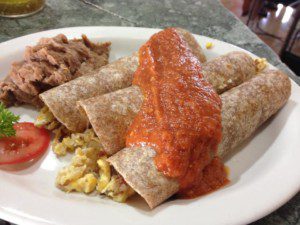
with maize since ancient times also have their own versions, Mexico has an amazing assortment of tamales. Before the arrival of the Spaniards, maize tamales included a variety of spices and veggies and were cooked underground and covered. This 3000-year-old staple food was modified when the Spaniards brought into the New World many new flavors, meat and other veggies unknown to the New World. Tamales are cooked in many different and yummy ways according to every State: green, red, mole, with chicken, meat or pork, beans, sweet, etc. As part of the Mexican traditional cuisine and the tables of many households, tamales still hold a deeply rooted ancient tradition as offerings on the Day of the Dead.
Let’s not forget many other products from the ancient Mexican traditions that blended not only into the Spanish culture but also worldwide: chile (in many sizes, forms and spiciness), vanilla, chocolate, beans, tomato, avocado, many spices, just to name a few. And one of many representative dishes of Mexico is mole. There’s mole from Puebla, green mole, mole from Oaxaca, mole de olla (stockpot), almond mole (uses 26 ingredients!) and others depending on the spices and chili used. It is said the term mole came from the nahuatl molli or mulli, which originally referred to any sauce; however, the most famous mole of all comes from Puebla which has two legends. One tell us that it was created by a Dominican nun in the XVI Century, but that it was so spicy that it was almost inedible; so, she blended almond, clove, cinnamon and sesame seeds to reduce the “hotness”; the other speaks about a cook who was asked to prepare a banquet for an important visitor from Spain; he was so nervous that he tripped and all the ingredients he had been carrying in a tray fell into the pot. Puebla gave us another Mexican delicacy that is the most representative, internationally renowned and symbolic of the Independence: the Chiles en Nogada, closely related to the Independence when it finally consummated in 1821. The most popular version of its creation is the one about some Augustinian nuns of a Convent in Puebla. After learning that Agustin de Iturbide, who signed the Independence Treaty, was in town to celebrate his name day, they prepared a special dish that would remind him of the colors of the flag: green, white and red. Tradition indicates that Chiles en Nogada use 20 ingredients, at least, although the sophisticated version uses up to 50!! The ingredients and its preparation vary from one region to another, always keeping the Poblano peppers, the nogada base (walnut sauce) and the pomegranate seeds.
Happy Independence Day!!!!
La Independencia de México y la mezcla cultural en la gastronomía
Mónica Sauza comparte un artículo sobre los sabores, comida e historia de México . .
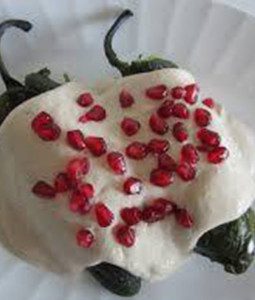
Después de que México-Tenochtitlán cayó a manos de los conquistadores españoles en el siglo XVI, esta época en la Nueva España se conoce como el periodo Colonial o Virreinato, y duro hasta la Independencia. La guerra contra la dominación española en efecto comenzó en el año 1810. La historia nos dice que durante una misa el día 16 de septiembre a las 5 a.m., el grito del cura Miguel Hidalgo fue: “¡Viva la Independencia!¡Viva la Virgen de Guadalupe!¡Viva Mexico!¡Muera el mal gobierno”, mas no fue sino hasta el año 1821 cuando se consumó la Independencia. Por razones prácticas y muchos años después, el Grito se representa de Nuevo todos los años el 15 de Septiembre a las 11:00 p.m. y algunas de las palabras de Hidalgo han sido ligeramente modificadas,
La mezcla de ambas culturas en la Nueva España trajo consigo muchos cambios y la comida no fue la excepción. Los españoles introdujeron a México alimentos que nunca habían sido vistos, y mucho menos probados. Pero también los españoles fueron sorprendidos con los alimentos de la tierra que habían conquistado. De acuerdo a investigaciones, la comida mexicana tiene más de 1500 años y es considerada como una de las más antiguas en el mundo. Como parte de esta cultura mágica, ritualista y artística, rodeado de leyendas el representante principal de México es el maíz, un alimento básico y sagrado. Los aztecas creían que los dioses habían escondido semillas de maíz entre dos montañas, por lo que pidieron ayuda al dios Quetzalcóatl. Este se transformó en hormiga, robó un grano de maíz y lo trajo a la gente enseñándoles como cosecharlo. En el Chilam Balam de los mayas, nuevamente las hormigas están implicadas: La semilla estaba escondida bajo un peñasco y sólo las hormigas conocían de su existencia. Una zorra la encontró, la tomó a través de una grieta y se la comió. La zorra contó a otros animales acerca del grano y entre todos decidieron compartir el secreto al hombre. El hombre destruyó la peña y extrajo el maíz. El Popol Vuh gira en gran parte en torno al maíz: En la creación del hombre, los dioses crearon su piel con los maíces amarillo y blanco; y de la masa, crearon sus brazos y piernas.
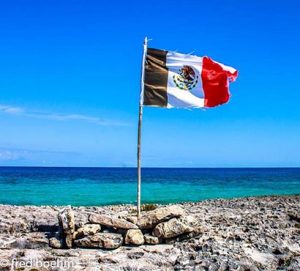 Desde épocas inmemorables mezclando el maíz con cal y agua se preparaban las tortillas. Aparte de ser uno de los alimentos básicos, en las culturas azteca (tlaxcalli) y maya (waaj) las tortillas eran utilizadas también como ofrendas como “alimento para los dioses”. En nuestros tiempos todos sabemos que los incomparables platillos mexicanos siempre estarán hechos de o incluirán tortillas: quesadillas, enchiladas, papadzules, codzitos, chilaquiles, chimichangas, enmoladas, chalupas, sopes…tantos que…bueno…de seguro los encontrará en muchos de los excelentes restaurantes de Cozumel.
Desde épocas inmemorables mezclando el maíz con cal y agua se preparaban las tortillas. Aparte de ser uno de los alimentos básicos, en las culturas azteca (tlaxcalli) y maya (waaj) las tortillas eran utilizadas también como ofrendas como “alimento para los dioses”. En nuestros tiempos todos sabemos que los incomparables platillos mexicanos siempre estarán hechos de o incluirán tortillas: quesadillas, enchiladas, papadzules, codzitos, chilaquiles, chimichangas, enmoladas, chalupas, sopes…tantos que…bueno…de seguro los encontrará en muchos de los excelentes restaurantes de Cozumel.
A pesar de que los tamales no son exclusivos de México ya que muchas culturas en el Continente Americano que tuvieron contacto con el maíz desde la antigüedad también cuentan con sus versiones, México tiene una variedad impresionante de tamales. Antes de la llegada de los españoles, los tamales de maíz incluían una variedad de especias y vegetales, y eran preparados bajo tierra y cubiertos. Este alimento básico con 3000 años de antigüedad fue modificado cuando los españoles trajeron al Nuevo Mundo muchos sabores nuevos, la carne y otros vegetales desconocidos para el Nuevo Mundo. Los tamales son preparados de muchas y deliciosas maneras de acuerdo a cada Estado: verdes, rojos, de mole, con pollo, con carne o puerco, con frijoles, dulces, etc. Como parte de la cocina tradicional mexicana y de la mesa de muchos hogares, los tamales aún mantienen una arraigada tradición desde la antigüedad como ofrendas el Día de los Muertos.
No olvidemos muchos otros productos procedentes de las antiguas tradiciones mexicanas que se mezclaron no sólo dentro de la cultura española sino también en el mundo: el chile (en muchos tamaños, formas y sabores picantes), la vainilla, el chocolate, los frijoles, el tomate, el aguacate, muchas especias, solo por mencionar algunos. Y, uno de los platillos más representativos de México es el mole. Hay mole de Puebla, mole verde, mole de Oaxaca, mole de olla, mole de almendra (¡utiliza 26 ingredientes!), y otros dependiendo de las especies y chile que se utiliza en su preparación. Se dice que el término mole proviene del náhuatl molli o mulli, que originalmente se refería a cualquier salsa; sin embargo, el mole más famoso de todos proviene de Puebla, el cual tiene dos leyendas. Una de estas nos dice que fue creado por una monja dominica del siglo XVI, pero que estaba tan picoso que era casi imposible de comer por lo que mezcló almendra, clavo, canela y semillas de ajonjolí para reducir el picor; la otra leyenda habla de un cocinero al que se le pidió preparar un banquete para un visitante importante procedente de España; el cocinero estaba tan nervioso que tropezó y todos los ingredientes que cargaba en una charola, cayeron en la olla. Puebla también nos dio otra exquisitez mexicana que es la más representativa, internacionalmente reconocida y símbolo de la Independencia: los Chiles en Nogada, íntimamente relacionados con la Independencia cuando por fin se consumó en el año 1821. La versión más popular acerca de su creación es aquella de unas monjas agustinas en un convento de Puebla. Después de enterarse que Agustín de Iturbide, quien hubiera firmado el tratado de la Independencia, estaría en la ciudad para celebrar su santo, prepararon un platillo especial que le recordaría los colores de la bandera: verde, blanco y rojo. La tradición señala que los Chiles en Nogada debe prepararse con, por lo menos, 20 ingredientes pero, ¡la versión sofisticada utiliza hasta 50! Los ingredientes y su preparación varían de una región a otra, siempre manteniendo los chiles poblanos, la nogada y las semillas de granada.
¡Feliz Aniversario de la Independencia!
Otra fugitiva de la Ciudad de México. Mónica ha hecho de Cozumel su hogar definitivo. Desde su llegada en 1981, trabajo en turismo en todos los lugares habituales: hoteles, buceo, aeropuerto, ferries, hasta que se abrió la oportunidad de desempeñarse en su campo. Desde finales de la década de los años 70 Mónica ha estado traduciendo e interpretando, dedicándose plenamente a ello a partir de 1998, y ha asistido a extranjeros y locales de la Isla a establecer su residencia y sus negocios. Es traductora con gran experiencia, ávida historiadora y una gran fuente de tradiciones y leyendas locales.
- Mexican History 3 Kings Day - January 8, 2025
- 2025 Mexican National Holidays - January 3, 2025
- Mayan Weather Predictions - January 2, 2025
Another escapee from Mexico City, Monica has made Cozumel her definite home. Since her arrival -in 981- she worked in tourism in all the usual venues: hotels, scuba diving, airport, ferries, until the opportunity to practice in her chosen field grew. Since the latter part of the 70s Monica has been translating and interpreting, fully devoting herself to it since 1998, and has assisted foreigners and Island residents establish residence and businesses- She is a Translator with extensive experience, an avid historian and a great source of local lore and legends. Otra fugitiva de la Ciudad de México. Mónica ha hecho de Cozumel su hogar definitivo. Desde su llegada en 1981, trabajo en turismo en todos los lugares habituales: hoteles, buceo, aeropuerto, ferries, hasta que se abrió la oportunidad de desempeñarse en su campo. Desde finales de la década de los años 70 Mónica ha estado traduciendo e interpretando, dedicándose plenamente a ello a partir de 1998, y ha asistido a extranjeros y locales de la Isla a establecer su residencia y sus negocios. Es traductora con gran experiencia, ávida historiadora y una gran fuente de tradiciones y leyendas locales.
Feria Cedral 2025
Feria Cedral 2025 La Feria de El Cedral & La Fiesta de...
Cabana Beach Cozumel
Cabana Beach Cozumel The Cabana Beach Now Offers New Options, New Packages...
Cozumel Current News
Cozumel Current News Cozumel Current News Text & Translation by Moises JH...
Three Cozumel topics that may be of interest
Three Cozumel topics that may be of interest Three Cozumel topics...


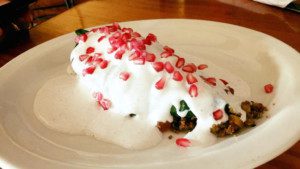

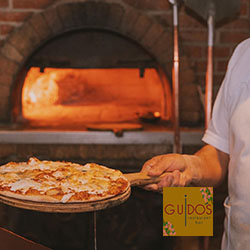





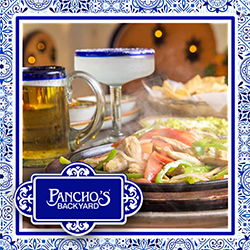
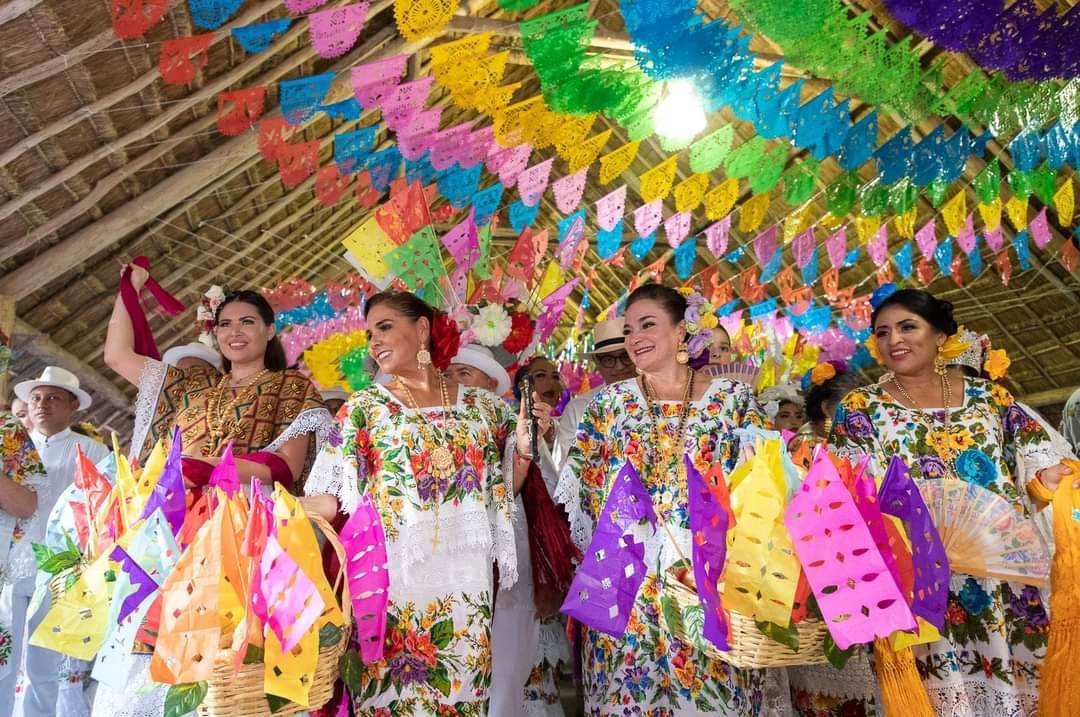










Leave a comment